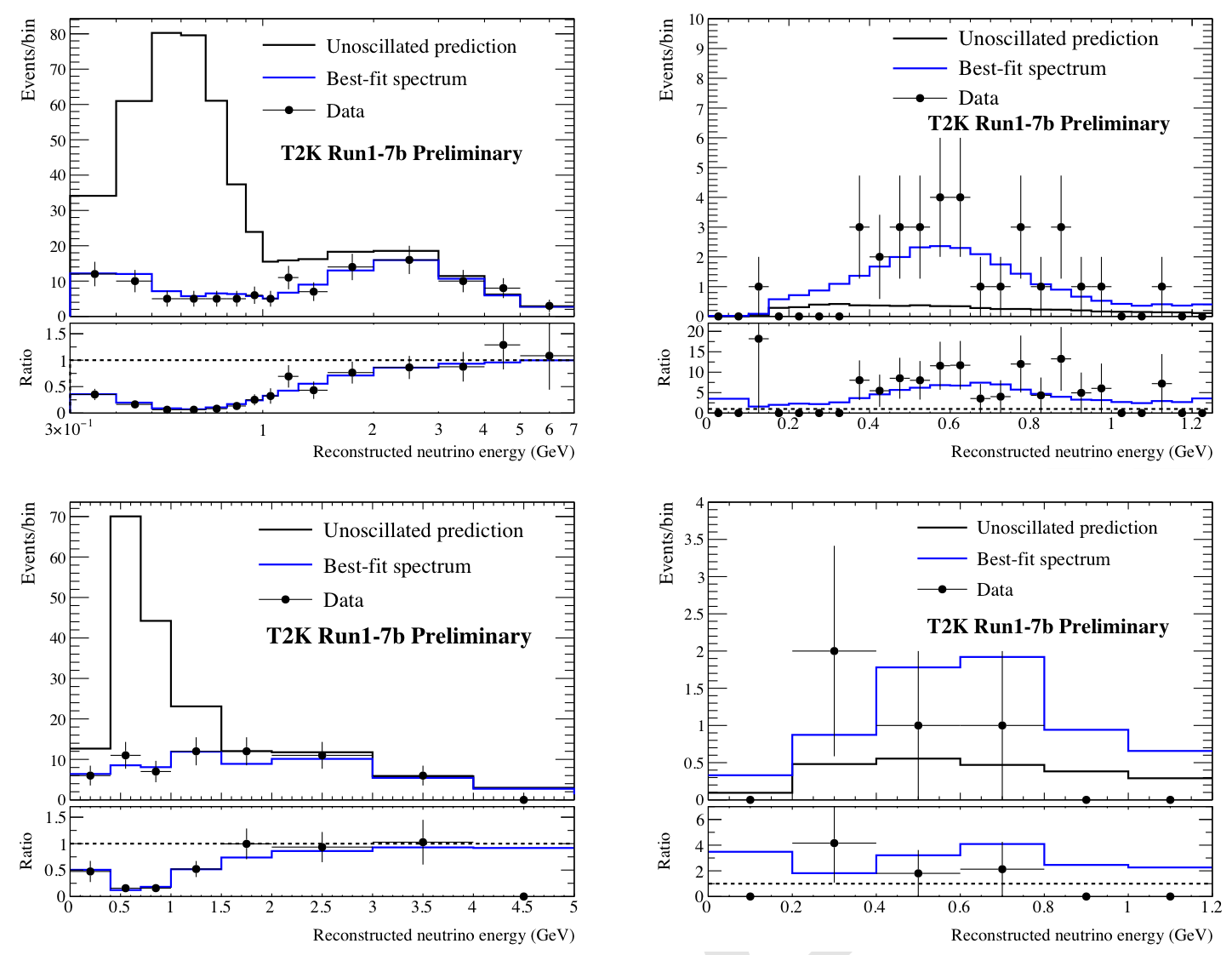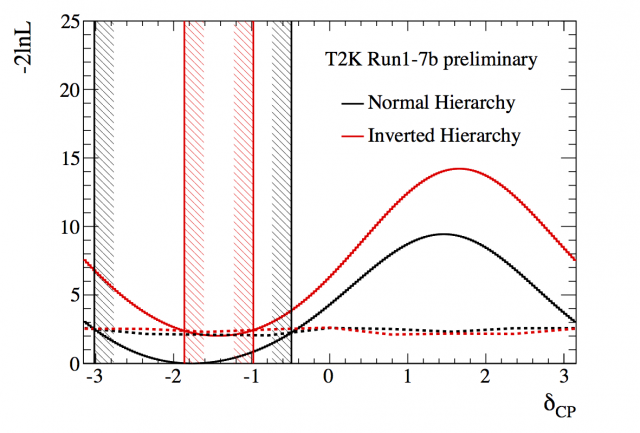New data support growing hint of different oscillation probabilities for neutrinos and antineutrinos
The T2K Collaboration presented new results on neutrino and antineutrino oscillations at the 27th International Conference on Neutrino Physics and Astrophysics (Neutrino 2016) at Imperial College London. T2K’s new data continue to prefer maximal mixing in the atmospheric angle (θ23), a value of the CP violating phase (δCP) near the maximally violating value -π/2, and the normal ordering of the neutrino mass hierarchy.
With nearly twice the antineutrino data in 2016 compared to their 2015 result, T2K has performed a new analysis of all data, as shown in Fig 1, fitting both neutrino and antineutrino modes simultaneously. If CP violation occurs in neutrinos, it will manifest itself as a difference in the oscillation probabilities of neutrinos and antineutrinos. T2K’s observed electron antineutrino appearance event rate is lower than would be expected based on the electron neutrino appearance event rate, assuming that CP symmetry is conserved.
When analyzed in a full framework of three neutrino and antineutrino flavors, and combined with measurements of electron antineutrino disappearance from reactor experiments, the size of the expected T2K 90% confidence interval for δCP with the current statistics ranges from approximately 2π (ie. the full range of δCP) to 1π depending on the true value of δCP and the true mass ordering. The actual T2K data yield a 90% confidence interval for δCP of [–3.02; –0.49] ([–1.87 ; –0.98]) for the normal (inverted) mass ordering, as shown in Fig 2. The CP conserving values (δCP=0 and δCP= π) lie outside of this interval.
This new result is based on a data set of 1.44×1021 protons on target (POT), which is 20% of the POT exposure that T2K is set to receive. The full T2K exposure of 7.8×1021 POT is expected to come by ~2021, thanks to planned upgrades to the J-PARC Main Ring accelerator and the neutrino beamline. Moreover, T2K is proposing a run extension that will lead to a full exposure of 20×1021 POT, with 3σ sensitivity to CPV observation, by ~2025, when the next generation experiments are expected to begin operations.
Violation of CP symmetry could hold the key to one of the most profound questions in science, which is: why is the universe comprised of matter today even though the Big Bang produced equal parts matter and antimatter? Although the new T2K result is not yet statistically significant, it is nevertheless an intriguing hint that the neutrino will continue to provide new breakthroughs in our understanding of the universe.
More details on the new T2K result, as well as prospects for future running of the experiment, can be found in the presentation file from the London Neutrino 2016 conference.

Figure 1. Neutrino(top) and antineutrino(bottom) event distributions at the T2K far detector (Super-K), for both muon (left) and electron (right) flavors. In each figure, the black points show T2K (anti)neutrino data, the black curves show the expectations for the case of no neutrino oscillation, and the blue curves show the expectation for the best fit oscillation parameter values.

Figure 2. Negative log likelihood values as a function of the CP violating phase parameter δCP; The black (red) curves show the case for the normal (inverted) mass ordering; the black (red) vertical lines with hatch marks show the 90% CL allowed regions for the normal (inverted) mass ordering. This figure shows the result for T2K neutrino and antineutrino data, combined with reactor antineutrino results. The CP conserving values (δCP =0 and δCP= π) lie outside the 90% region.



